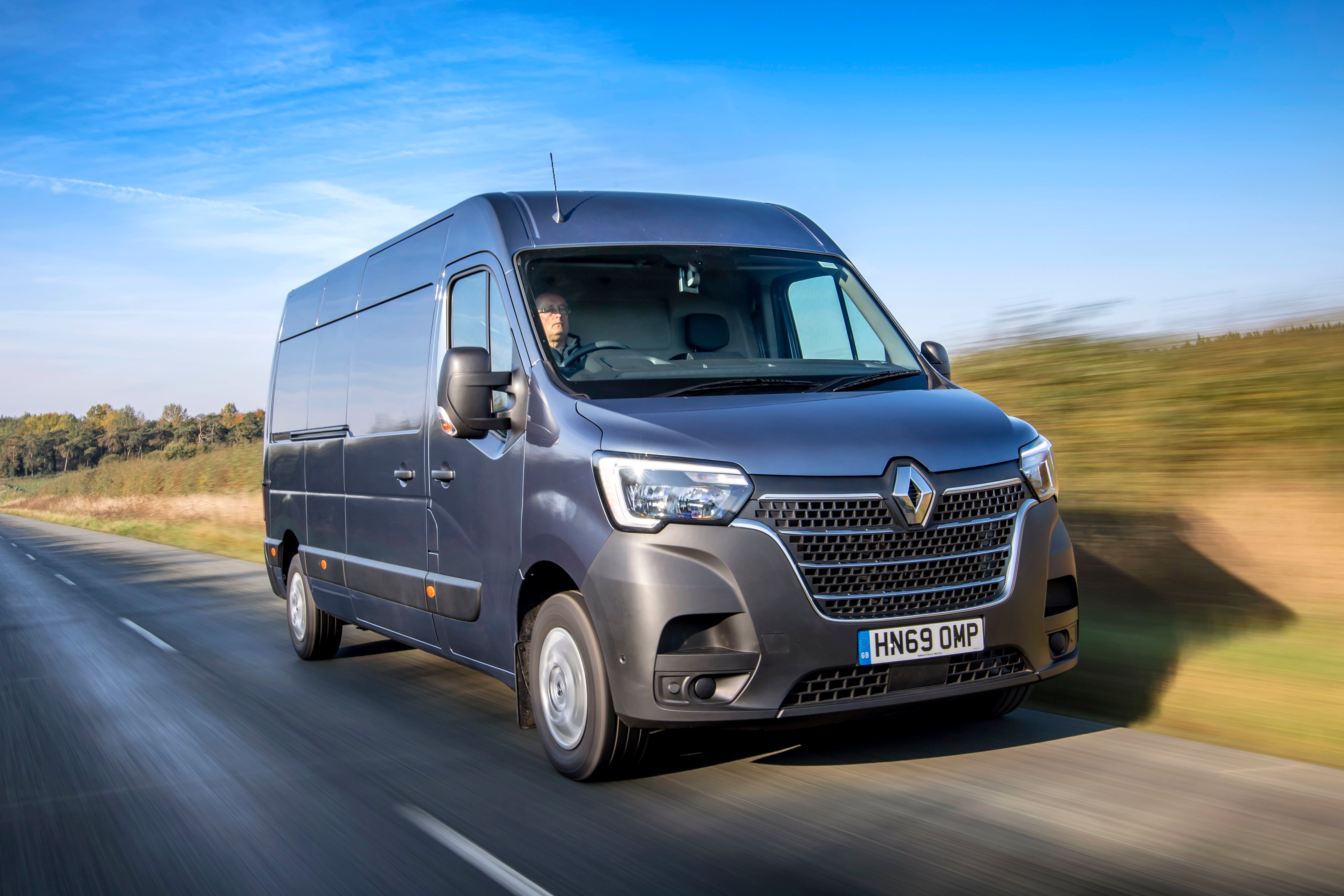Renault Master Review 2025: Price, specs & boot space
Written by Andrew Brady
Quick overview
Pros
- Excellent value
- Wide choice of body styles and conversions
- Available with diesel or electric power
Cons
- Early models are starting to feel their age
- Key rivals are better to drive
- Moderate levels of engine and road noise on the motorway
Overall verdict on the Renault Master
"Affordable, practical and easy to drive, the 2022 Renault Master is a safe choice in the competitive large van market."
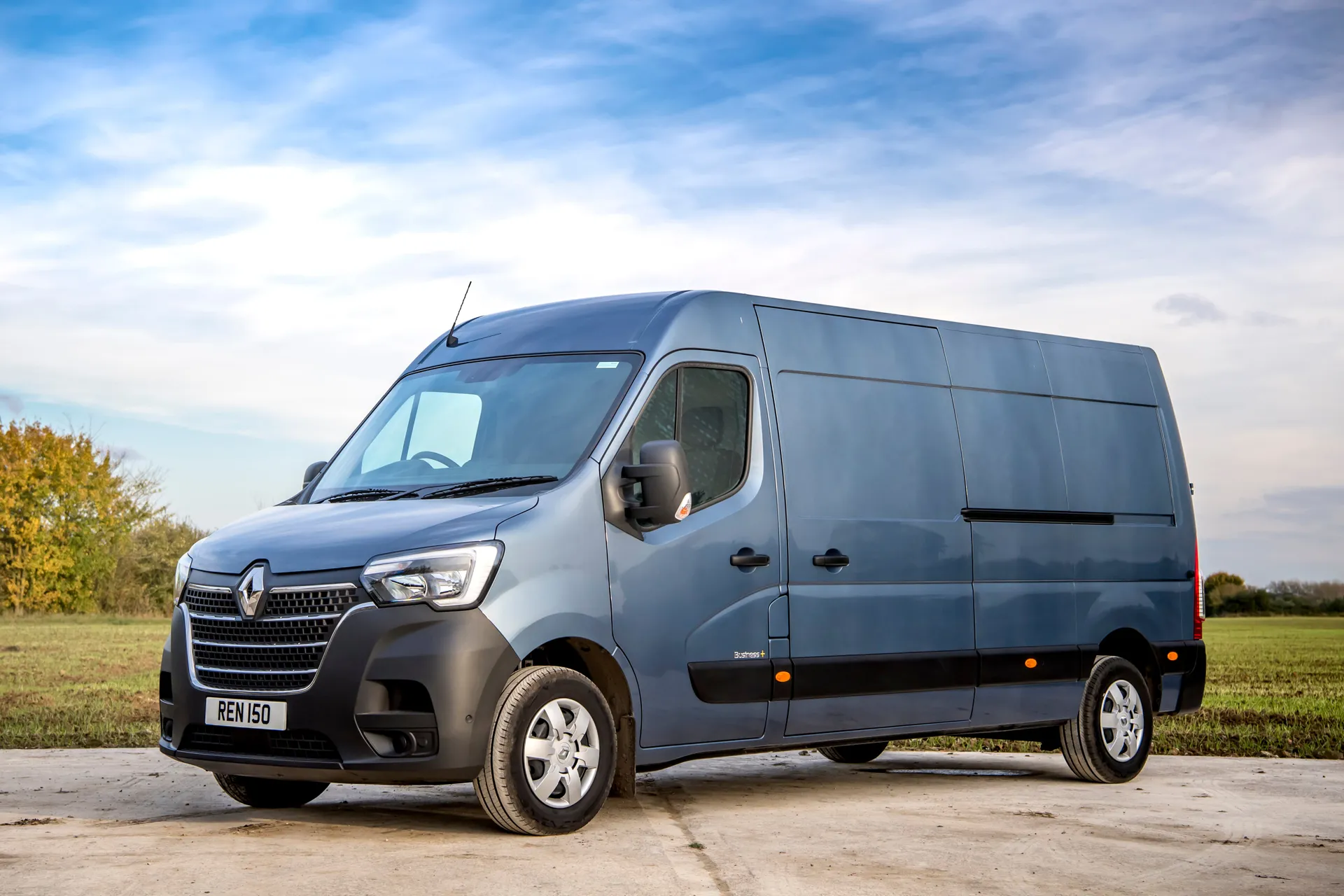
The 2022 Renault Master is the heavyweight veteran of the large van market. First launched in 2010, the Master has been given numerous updates over the years, which have helped keep it at the front of the pack for over a decade.
Like its sister vehicle, the Vauxhall Movano, the Master majors on practicality, low running costs and versatility. There are hundreds of Renault vans to choose from with the Master offered as a panel van, tipper, dropside, Luton and box van. You also get the choice of four body lengths and three roof heights. This means there is literally a Master van for every job.
Popular with builders and delivery drivers, the Master panel van offers up to 17 cubic metres of loadspace while the box van increases carrying capacity to 19.3 cubic metres. Payloads range from 800kg to 2000kg, depending on which model you choose.
All versions of the Master get a single side sliding door with a minimum opening width of 1050mm, which means loading/unloading is easy. High spec models get a pair of sliding side doors for ultimate forklift friendliness, while the rear barn-like doors provide a maximum load width of 1580mm.
Renault's trusty 2.3-litre diesel engine won't win any prizes for refinement - it is a bit noisy on the motorway - but it does pack a punch when it comes to performance. This means you get lots of low-gear acceleration and are seldom short of power when the Master is fully laden or towing a heavy trailer.
Renault added a four-wheel-drive model to the Master range in 2016 and a fully electric model - badged Master Z.E - was added in 2018.
If you are looking for a large diesel van that is exempt from clean air zone charges then you'll need to choose your Master carefully because, broadly speaking, diesel vans that do not conform to Euro 6 will be liable for a charge each time you drive into a clean air zone.
Renault added Euro 6 engines in 2016 to the Master line-up, but you'll need to check the van's documents to be sure of this. A tell-tale sign of a Euro 6 van is the AdBlue system, which was introduced to enable the engine to comply with the strict emissions standards.
Advertised fuel economy for the earliest version of the Master van will peak at around 40mpg, depending on the size and spec of the vehicle. A comprehensive engine update in 2019 improved this top-end figure to 48mpg.
The Master's interior and road handling feel a little dated when compared to the 2022 versions of the Ford Transit, Mercedes-Benz Sprinter and Volkswagen Crafter. The cabin is hardwearing and easy to use. But long journeys in the Master can be hard on the senses, with notable road and road noise when cruising on the motorway.
That's not to say the Renault isn't worthy of consideration; the Master is easy to drive, powered by a strong 2.3-litre diesel engine and available with front-, rear-, or four-wheel drive. What's more, because of that Renault diamond on the bonnet, the Master is generally cheaper to buy with van snobs overlooking it in favour of its pricier rivals.
Looking for a used van for sale? We've got 100s of Renault Approved Used Cars for Sale for you to choose from, including a wide range of Renault Master vans for sale.
Is the Renault Master right for you?
The 2022 Renault Master is a very capable and affordable large van. Admittedly, it isn’t as refined or as flashy as its rivals from Volkswagen, Mercedes-Benz or Ford, but the Master provides heavy-duty load moving capacity at a price that most people can afford.
The rear-wheel-drive version of the Master panel van offers up to 17 cubic metres of loadspace while the box van is popular with delivery drivers and removal firms, thanks to its carrying capacity of 19.3 cubic metres. Payloads range from 800kg to 2000kg, depending on which model you choose.
Renault’s latest 2.3-litre diesel engine is a strong performer and is available with a broad choice of power outputs. The Master is also offered with a manual or fully automatic gearbox. The Master Z.E is powered by pure electricity and will cover up to 75 miles on a full charge.
What’s the best Renault Master model/engine to choose?
Choosing the best 2022 Renault Master will depend on your professional needs. The Master is offered in a huge variety of bodystyles, which includes panel van, crew van, dropside, tipper, box van and Luton van.
If you are a builder or delivery driver then you will want the Master panel van with Renault’s excellent 2.3-litre diesel engine, with 150PS for front-wheel drive models or 145PS for rear-wheel drive. This engine is offered with a six-speed manual gearbox, while the 150PS engine is available with a smooth-shifting six-speed automatic transmission.
If you seldom leave the city then you should consider the Master Z.E electric van with a maximum range of 75 miles. This version of the Master is easy to use and designed for short-drop delivery work. A full charge will take around six hours from home or work-placed electric wallbox.
What other vans are similar to the Renault Master?
The Renault Master rivals some of the best large vans in the business, which includes the Ford Transit, Mercedes-Benz Sprinter and Volkswagen Crafter. You should also consider the Vauxhall Movano - it is based on the same mechanical platform as the Renault Master and is very similar to drive.
Comfort and design: Renault Master interior
“The Renault Master isn’t as plush as its German rivals but the interior is comfortable, practical and easy to use. If you need your van to double up as a mobile office then aim for a 2019 or newer version - these come with under-seat storage and a work table. ”
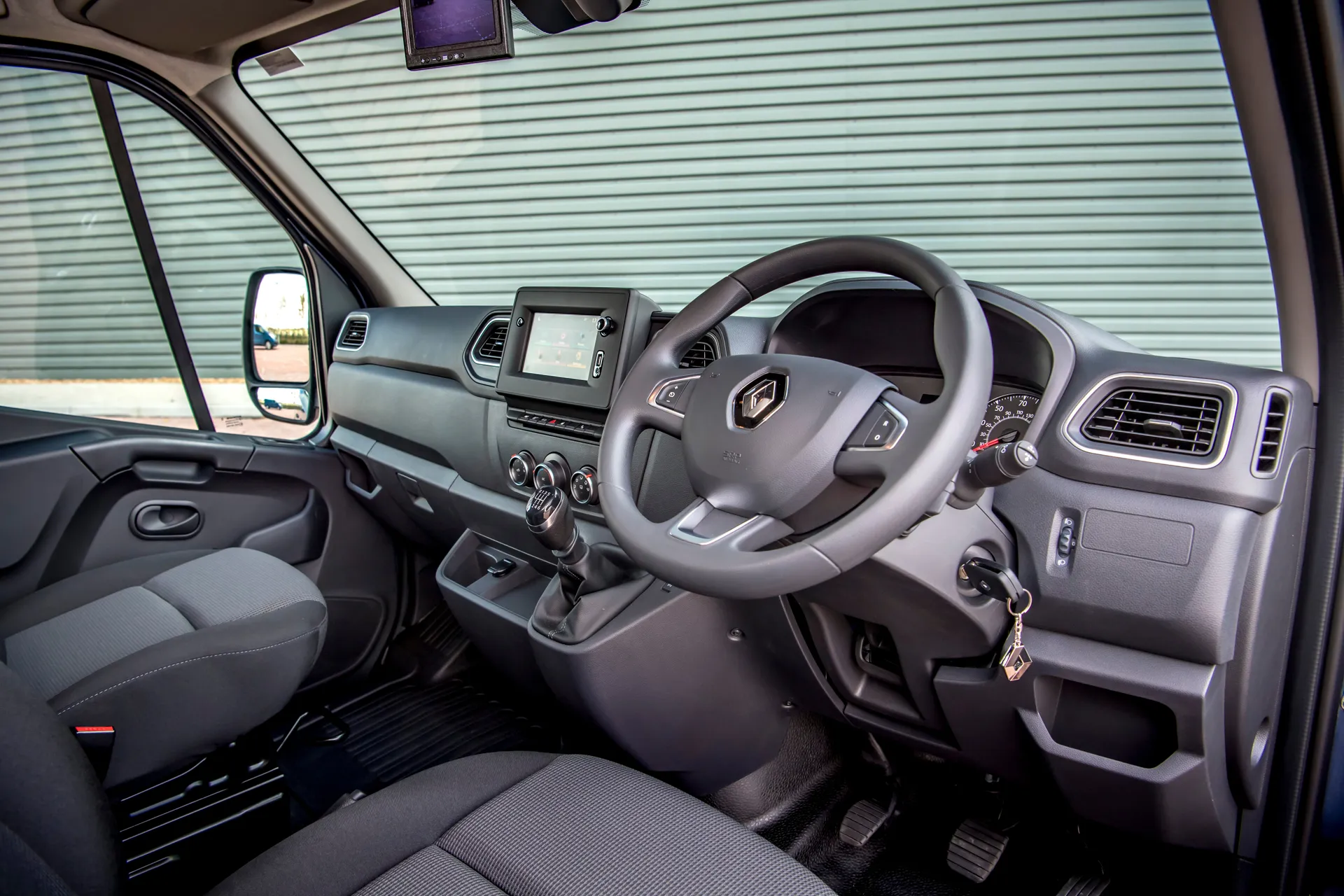
The Renault Master was first launched in 2010 and the interior layout in these early vans is a little basic and old fashioned compared to key rivals, with a dashboard that features a comfortable steering wheel and a simple instrument display, plus a few small cupholders and a pull-out clipboard holder.
Things improve considerably with newer models, which get a plusher and more driver-friendly design that provides everything you could need for the mobile office. Find a van from 2019 and you can get lots of useful features, such as an overhead parcel shelf, pivoting seatback table, USB power sockets and an under-seat storage compartment for storing a laptop or tablet PC.
No matter which model you choose, all versions of the Master have a commanding view of the road, thanks to the large windscreen and elevated driver’s seat. Finding a comfortable driving position is also easy, thanks to the firm seat cushioning and wide seat base that provides excellent support for your lower back and upper legs.
Quality and finish
The Renault Master’s interior quality is strong but it can feel like a throwback to vans of yesteryear with lots of hard-wearing and scratchy plastics that are easy to clean but not all that pleasant to the touch.
The quality of the Master's interior received a notable upgrade in 2019, as part of a comprehensive model update, with better quality materials and improved soundproofing, which means the latest models are the most comfortable on a long motorway journey.
The dashboard is easy to master with a clear layout and lots of large buttons and knobs for the heating and ventilation controls. The thick layers of plastics that cover the interior should also be resilient to light knocks and scuffs.
Most versions of the Master are fitted with a driver’s armrest. Newer versions also come with dashboard compartments with USB sockets, which are perfect for storing and charging mobile phones.
Infotainment: Touchscreen, USB, nav and stereo in the Renault Master
Despite being an optional extra, most buyers add touchscreen navigation to the spec of their Renault Master. This means most used models will have sat-nav, which should prevent you from getting lost or trapped in a lengthy traffic jam.
Like its range of cars, the Master uses Renault’s R-Link touchscreen navigation system that provides 3D maps, online traffic updates and Bluetooth connectivity for your mobile phone. Depending on which version of the Master you choose, the map screen will be located in the centre of the dashboard or housed within the rear-view mirror.
Since 2019, as part of a major model refresh, the Renault Master has been sold with the optional Media Nav Evolution system. The latest navigation system is by far the best found in any version of the Master, with a crystal clear seven-inch display and full Android Auto and Apple CarPlay connectivity for your smartphone.
The latest versions of the Master get a generous scattering of UBS and 12V power sockets, too, which means you can keep your phone and PC/tablet computer charged at all times. You also get DAB audio as standard.
Space and practicality: Renault Master load space
The Renault Master is one of the best large panel vans when it comes to space, practicality and payload. You get the choice of four body lengths and three load heights. Some versions of the Master will carry payloads weighing up to 2000kg.
It's important to note that your driving licence may restrict which version of the Master you can legally drive. However, even in the 3.5-tonne segment, the Master still packs a punch with max payloads tipping the scales at 1500kg.
The rear-wheel-drive Master offers the best payload capacity at 2000kg while front-wheel-drive models will carry up to 1500kg and provide the lowest load height at 1627mm. When it comes to loadspace, you'll be looking at a 2500mm load length for the smallest version of the Master and 4300mm for the largest models.
Getting stuff in and out of the Master panel van is easy thanks to the huge side and rear doors. All vans get a single side sliding door as standard and the load width varies from 1050mm to 1270mm - depending on which body length you choose.
All Renault Masters get rear doors that have 180-degree hinges, which means access to the rear of the van is simple. The load width of the rear doors is 1580mm and the entrance height ranges from 1650mm to 1820mm.
The electric version of the Master can’t match the 2.3-litre diesel model for payload. Weights for the Renault Master Z.E start at 900kg and peak at 1000kg.
Handling and ride quality: What is the Renault Master like to drive?
“The Renault Master is easy to drive and surprisingly agile for its size, the only blot on the report card is above average noise levels on the motorway.”
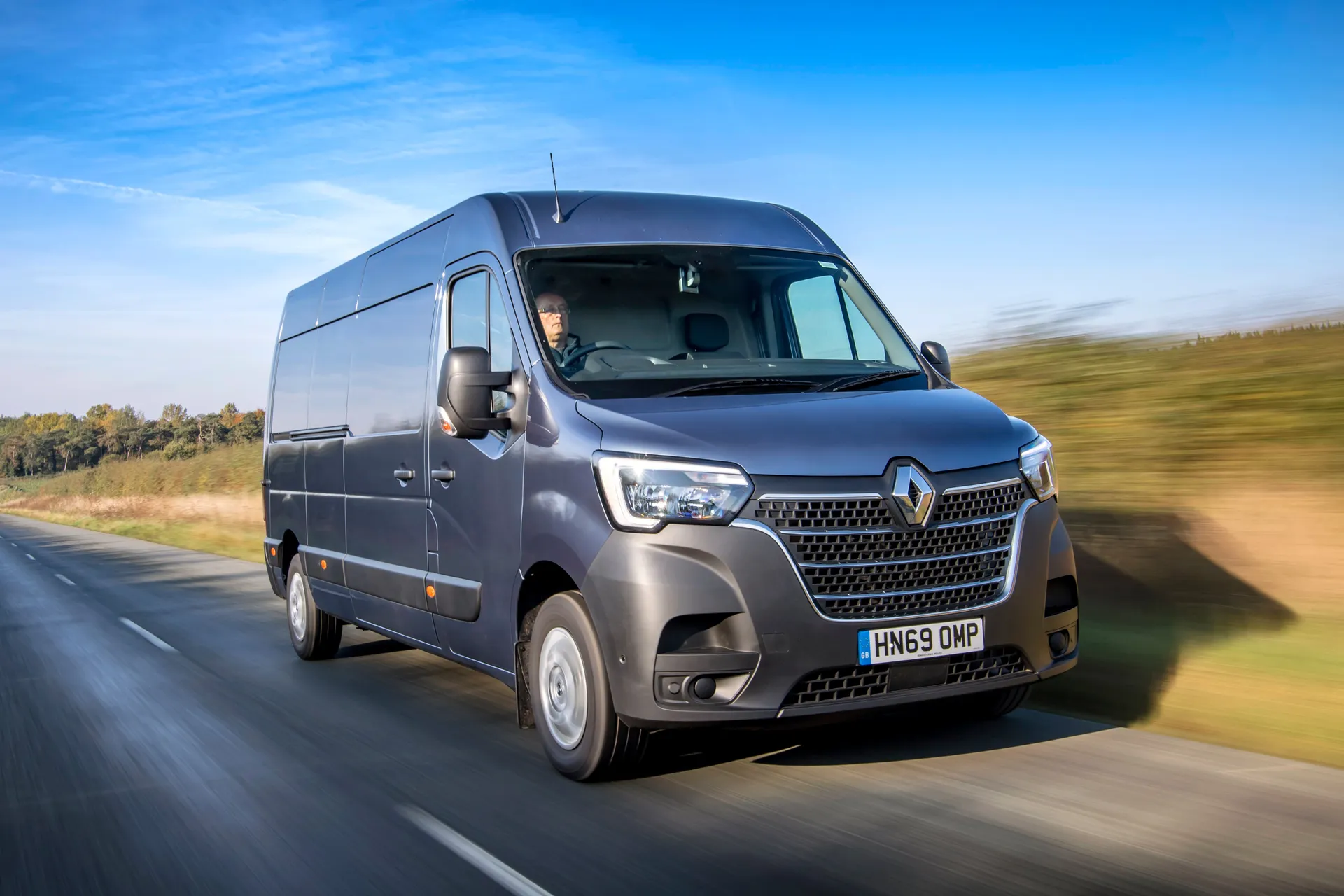
If you are new to the world of large vans then the Renault Master may appear to be something of a daunting vehicle to drive. However, despite the largest models measuring 6875mm in length, the Master is driver-friendly and surprisingly agile for its size.
Climb up into the Master’s cabin and you’ll find excellent visibility with a huge windscreen and large door mirrors that feature blind-spot mirrors that make it easy to spot vehicles or cyclists that may pull up alongside.
Renault offers a comprehensive array of optional driver aids and life with the Renault Master is made easier with the front and rear parking sensor pack, which also feature blind-spot monitoring for the door mirrors.
The steering is light and nicely weighted for a vehicle of this size, which means the Master can be directed along a twisty A road with confidence. The light steering also makes it easy to guide the Master into a parking bay or narrow side road.
The turning circle for the smallest version of the Master is roughly 12 metres, which isn’t bad for a large van. But those numbers grow to 16 metres for the longest model, so choose your delivery locations and building site parking spots with care.
The Master is calm and composed on the motorway. Since 2019, all vans get a smart side wind assist system as standard, which prevents the Master from swaying out of its lane on blustery days. Automatic headlights and windscreen wipers also allow you to focus 100% of your attention on the road.
If you need to venture to rural locations where wintery weather and hills may affect your journey then the Master is offered with a smart traction control system called Grip Xtend, which controls engine power to each wheel to improve the grip and manoeuvrability of the van.
The Master can also be specified with all-wheel drive. The suspension is raised by 65mm at the front and 58mm at the rear. The van also gets metal underbody protection to protect important components from damage by loose rocks or stones.
What engines and gearboxes are available in the Renault Master?
The Renault Master is offered with just one engine, a 2.3-litre diesel. Over the years the four-cylinder diesel has been updated and improved. Since 2019, rear-wheel-drive models are offered with 130PS or 145PS, while front-wheel-drive versions are available with 130PS, 150PS or 180PS.
Unless you plan to tow heavy trailers or utilise the full loading capacity of the Master, either the 145PS or 150PS should suffice for most professional needs. Both provide good low-gear acceleration and provide sufficient acceleration to safely join a fast-flowing road or navigate a busy junction.
All diesel vans get a six-speed manual gearbox as standard, but the 150PS and 180PS models can also be specified with a six-speed automatic transmission.
The Master is also offered as an all-electric van with a 57kW battery. The Renault Master Z.E is powered by an electric motor that develops 76PS with power delivered to the front wheels in smooth silence, but the top speed is limited to 62mph.
What is the maximum range in the Renault Master Z.E?
Renault claims the Master Z.E has a real-world driving range of 75 miles in the summer and 50 miles in winter. Of course, this will depend on driving style and payload, so expect less if you plan to drive a fully laden Master with a heavy right foot.
Refinement and noise levels
There is a strong argument to be made for van drivers not caring a jot for refinement, with many focusing on the Master’s carrying capacity, running costs and little else.
However, if you plan to use your van on the motorway for long periods then the Master will rub at your senses with above-average levels of road, wind and engine noise. The Ford Transit, Mercedes-Benz Sprinter and Volkswagen Crafter are more refined in this aspect.
That said, the Master is comfortable and the latest versions are much more refined and quieter than those sold when the van first went on sale in 2010.
Safety equipment: How safe is the Renault Master?
The Renault Master's safety tech has evolved over the past 10 years. Growing from the basic airbag, traction control, ABS and stability control set-up into something much more sophisticated.
All vans get a full-size bulkhead that separates the driver and passengers in the front from the load space in the back of the vehicle. This is important because it prevents serious injuries in the event of a crash or sudden stop.
Since 2019, the Master is fitted with side wind assist as standard, which prevents the vehicle from swaying out of its motorway lane when hit by strong crosswinds. Automatic headlights and windscreen wipers are also standard across the range.
If you raid the options list you can add parking sensors, reversing camera, automatic city emergency braking and lane guidance assist, which prevents the van from drifting out of its motorway lane.
MPG and fuel costs: What does a Renault Master cost to run?
MPG and fuel costs: What does a Renault Master cost to run?
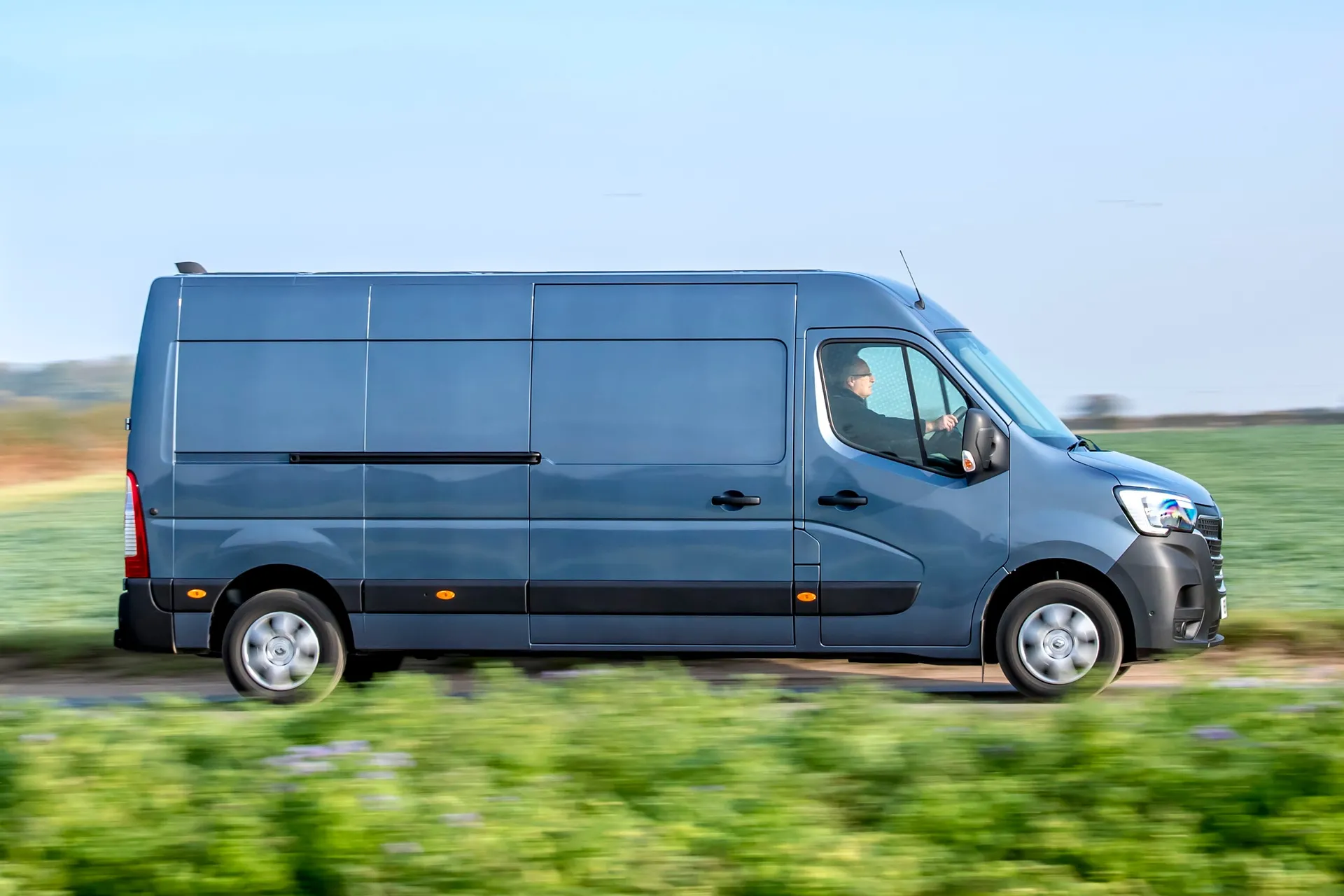
Fuel economy for the Renault Master will depend on which model you buy. At launch, in 2010, Renault advertised the Master with peak economy of around 40mpg. Over the years this figure has climbed to 48mpg, thanks to comprehensive engine updates.
Real MPG figures at Honest John Vans are not comprehensive, but they do suggest that true fuel economy figures will range from 28mpg to 32mpg for the earliest versions of the Master's 2.3-litre diesel engine.
Most vans get an 80-litre fuel tank as standard, but a 105-litre unit is available as an optional extra.
How reliable is the Renault Master?
Large vans tend to live hard lives, with their owners working their vehicles hard for up to 10 years before trading them in for a newer model. This means it is difficult to gauge reliability, with the vehicle's longevity very much depending on the van's service and maintenance record.
That said, according to official MoT results at HonestJohn.co.uk, around 70% of five-year-old Renault Master vans will pass the MoT.
Insurance groups and costs
The Master is the largest and most expensive van in the Renault range, which is reflected in its insurance groups and costs. The Master sits in groups 11 - 18, which is significantly higher than the compact Kangoo van (2 - 9).
Finding the cheapest insurance quote and getting the best deal might not necessarily be the same thing, however. That's why it's important to ensure your van, its contents and any tools it may be carrying are included in the cover.
VED van tax: What is the annual road tax on a Renault Master?
Road tax VED rates for the Renault Master are based on the year the van was first registered. For most vans, this is charged at a flat rate of £275 a year or £143 for six months. However, if you buy a Renault Master that was registered in 2010 then you will pay a lower rate of £140 a year or £77 for six months VED.
How much should you be paying for a used Renault Master?
"The Renault Master is an affordable and popular large van. This means you can afford to be quite picky when it comes to buying used, due to the sheer volume of vehicles for sale."
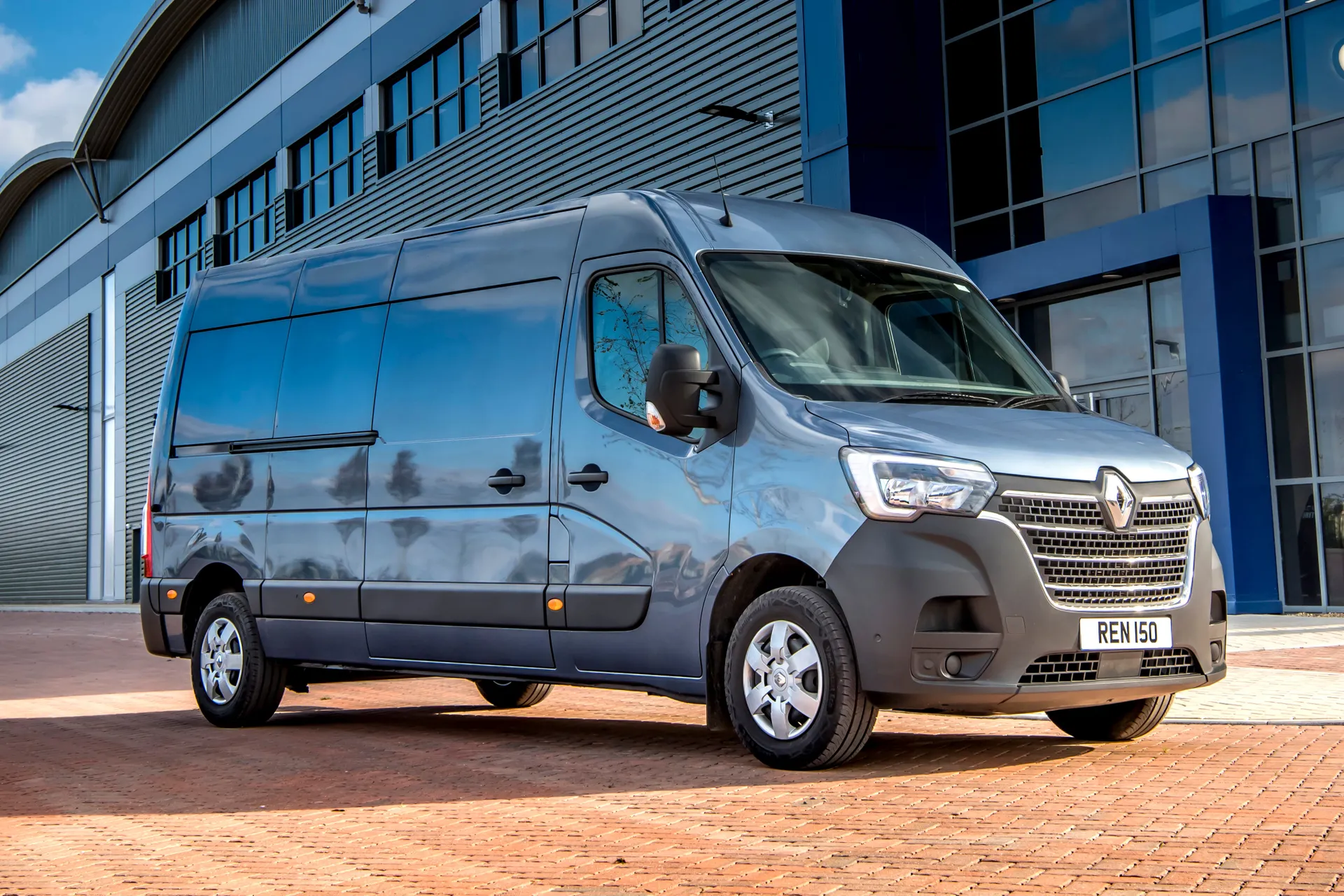
A new Renault Master van will set you back around £35,000 (including VAT) for a short wheelbase model with a low roof, while the largest models can cost as much as £48,000.
A 12-month-old Renault Master at a dealer will set you back around £25,000 while three-year-old examples can be found for comfortably under £20,000.
As with any commercial vehicle, it pays to buy a van with a full dealer stamped service history that shows the vehicle has been meticulously cared for.
Trim levels and standard equipment
Since 2019, the Renault Master has been offered in two trim levels - Business and Business +. All versions get three seats as standard, along with a full size bulkhead and spare wheel.
Business trim is the entry-level for the Master range, it gets automatic windscreen wipers and headlights as standard, along with height-adjustable driver's seats and overhead storage shelf.
Touchscreen navigation is an optional extra, but you do get a DAB radio as standard and Bluetooth connectivity for your smartphone, along with a generous scattering of USB and charging sockets.
Business + models add air conditioning, a seatback table for the middle pew and an upgraded driver's seat with its own suspension for improved comfort. You also get rear parking sensors and a 12V charging socket for the load area.
Ask the heycar experts: common questions
How high is the roof of the Renault Master?
What engine does the Renault Master use?
What vans are the same as the Renault Master?
Get our latest advice, news and offers
Keep me updated by email with the latest advice, news and offers from heycar.
By submitting you agree to our privacy policy
